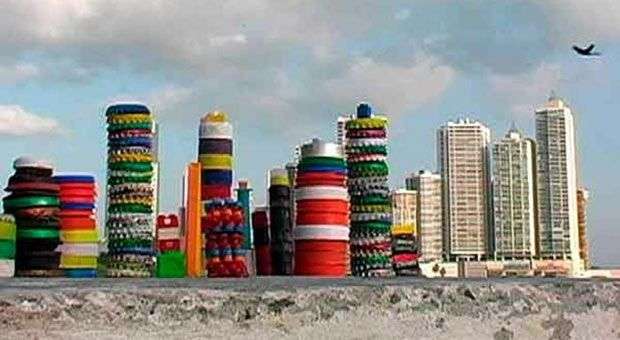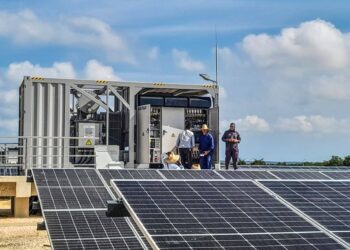We often hear or read in the voice of critics and theorists of contemporary art terms such as “new media” electronic art, video art, among many others whose essential aim is to define those paths of art of recent decades-roughly speaking-take as basis and / or theme the digital media or technologies of production and reproduction of images. In our cultural space this whole phenomenon retains some flavor to “new” peripheral quality continues to define us. Although involving artistic discourses are not necessarily conditioned by the technological support.
These days and until December 1, it may be interesting the exhibition “Memories of obsolescence” which gathers in the halls of the Wifredo Lam Contemporary Art Center a sample of 18 works from the collection Ella Fontanals-Cisneros Foundation (CIFO), focusing this time on video. The appropriation of the space museum involves you, sound and picture together in the viewer’s experience attending “Memories …” while the progression of the path is guided by certain pieces whose sound predisposes and fosters moving from one room to another…
The origin, formation and aesthetic interests of such a wide group of artists are diverse. The curatorial coincidence of these productions (by Jesus Fuenmayor) reveals conflicts, projections, perspectives and insights that relate to issues as diverse as the current ecological danger, tensions between traditional and modern art, the racial or gender or other problems of society today.
Marina Abramovic (Serbia 1946) for example, stars in Nude with Skeleton (2001-2005), an elaborate visual metaphor; her partner is a human skeleton, which the artist has over her own body lying in position referred to childbirth, the origin of life. The image is a delicate gear facing the philosophical pair of life and death, the beginning and the end, and the relativity of states, the ephemeral nature of human processes. The act of breathing rhythmically connecting the two bodies, the movement is transmitted deceptively manifesting in a subtle visual game. The nakedness of the artist / protagonist has a elemental performance projection, so that it acts before the viewer.
This resource -the nakedness-that we appreciate it also in a selection of materials by Francesca Woodman (1958 – 1981), American artist with a truncated career. The intention however is divergent, to appear repeatedly before the viewer, showing a self-assertive nudity where female subject ignores significantly taboos and prejudices and modesty. By tearing again and again the sheets of paper that cover her, the artist finally reveals an identity (legitimate?) and challenging. She strips not only physically but also in a symbolic act of revelation.
In another of the artists that make up the sample, the Cuban Ana Mendieta (Cuba 1948 – USA 1985), earthy sense of continuity in the body’s natural processes, made her consolidate a poetic near the Land (Earth) Art. In S / T (1975) her performance uses an infrared sensor that detects body temperature. The body is not clearly defined, but the hot-cold zones spread across the geography inhabited in her body, resembling the cycles and energies of the Earth itself, as an allegory of its geological, physical memory or perhaps mythical origin of the human race.
Among the works on display, probably the most impressive project is Who can erase the traces? (2005) by Guatemalan Regina José Galindo (1974), also characterized by the artist’s performance intervention. She prints a path of human blood between the Constitutional Court and the National Palace in Guatemala City, from her own footprints on the pavement. It draws attention to the lives lost due to violent confrontations in the country, and generally is a moving and powerful protest against the low value granted to anonymous existences holding up the upward spiral of universal history.
Four proposals that mark a possible starting point in the multiple faced design by”Memories …” The video as a creative medium, points strongly to this, but it is also true that the aesthetic and conceptual variables that the creators handle, linking past and future in capricious mutations, so that the work of art eventually becomes unlimited figure faces, animated of a persistent polyhedron vocation.










